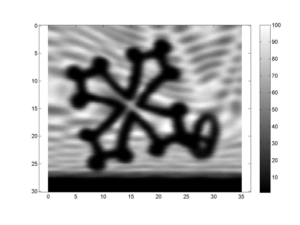[LUM#17] The Terahertz revolution
Seeing through matter... science fiction? It's a reality made possible by Terahertz waves. This technology, developed by the Terakalis company, opens the door to numerous applications, such as checking that aircraft wings are intact. For sure, it's reassuring.

Frédéric Teppe has a superpower. He can literally see into matter. A superhero? More like a "sociologist of electrons", as the physicist calls himself. With his colleagues at the Charles Coulomb Laboratory*, he has been studying the behavior of these elementary particles for years. " Plasma oscillations, or electron waves, can propagate through transistors to generate or detect electromagnetic waves at Terahertz frequencies", explains the specialist. These Terahertz waves are located in the electromagnetic spectrum between microwaves and infrared. While mankind has long been "totally blind in this frequency range", Terahertz wave tamers have shed light on their extraordinary properties...
See through

"These are non-ionizing waves that are therefore harmless to health and have a strong penetrating power enabling them to pass through different types of material, including fabric, plastic or even composite materials, and providing a contrast far superior to X-rays." These are properties that Frédéric Teppe and his colleagues Wojciech Knap, Nina Dyakonova and Pierre Solignac decided to capitalize on by founding the start-up T-Waves Technologies, now Terakalis, in 2013, winner of no fewer than 4 innovation awards. A company that is all the more remarkable for the fact that "it's quite rare to see applications coming out of a fundamental physics laboratory", notes Frédéric Teppe.
And to turn this into a reality, we had to convince manufacturers of the full potential of Terahertz waves. While some were hesitant at first, they soon realized that this ability to probe the intimacy of materials could prove very useful. "During one of our first presentations, one of our colleagues took off her pendant and put it in an envelope. We then demonstrated that our device could literally see the pendant through the envelope", recalls Frédéric Teppe.
Non-destructive testing
The company, which now has 20 employees, is banking on this technology to enter the field of non-destructive evaluation and testing of materials for the scientific and industrial sectors. "Until now, to check that a part was free of defects, you had to destroy it to look inside, but thanks to Terahertz waves, we can now assess the quality of materials in great detail, while leaving them intact. As a result, the technology has a place of choice in the aeronautics and automotive sectors, which are heavy consumers of plastic and composite materials, through which Terahertz waves easily pass. " We can, for example, inspect the wings of an airplane or the body of a helicopter for any defects," explains the physicist. Transport safety is one of the many superpowers of Terahertz waves.
From wheat to luxury
Terahertz waves are about to invade our daily lives, and applications abound. A revolution is in the offing in the field of agronomy, where they can be used to determine the water stress of plants, so as to better adapt irrigation. In the parcel distribution chain, where they can be used to detect any dangerous contents. In medical imaging, where they could be used to detect the subcutaneous ramifications of a melanoma through the skin. In telecommunications, which could reach unprecedented speeds. But also in the luxury goods sector: "We can, for example, look through a tube of lipstick to see if there are any bubbles in the paste and guarantee the quality of the product", explains Frédéric Teppe. Sky is the limit?
UM podcasts are now available on your favorite platforms (Spotify, Deezer, Apple podcasts, Amazon Music...).
*L2C (CNRS, UM)